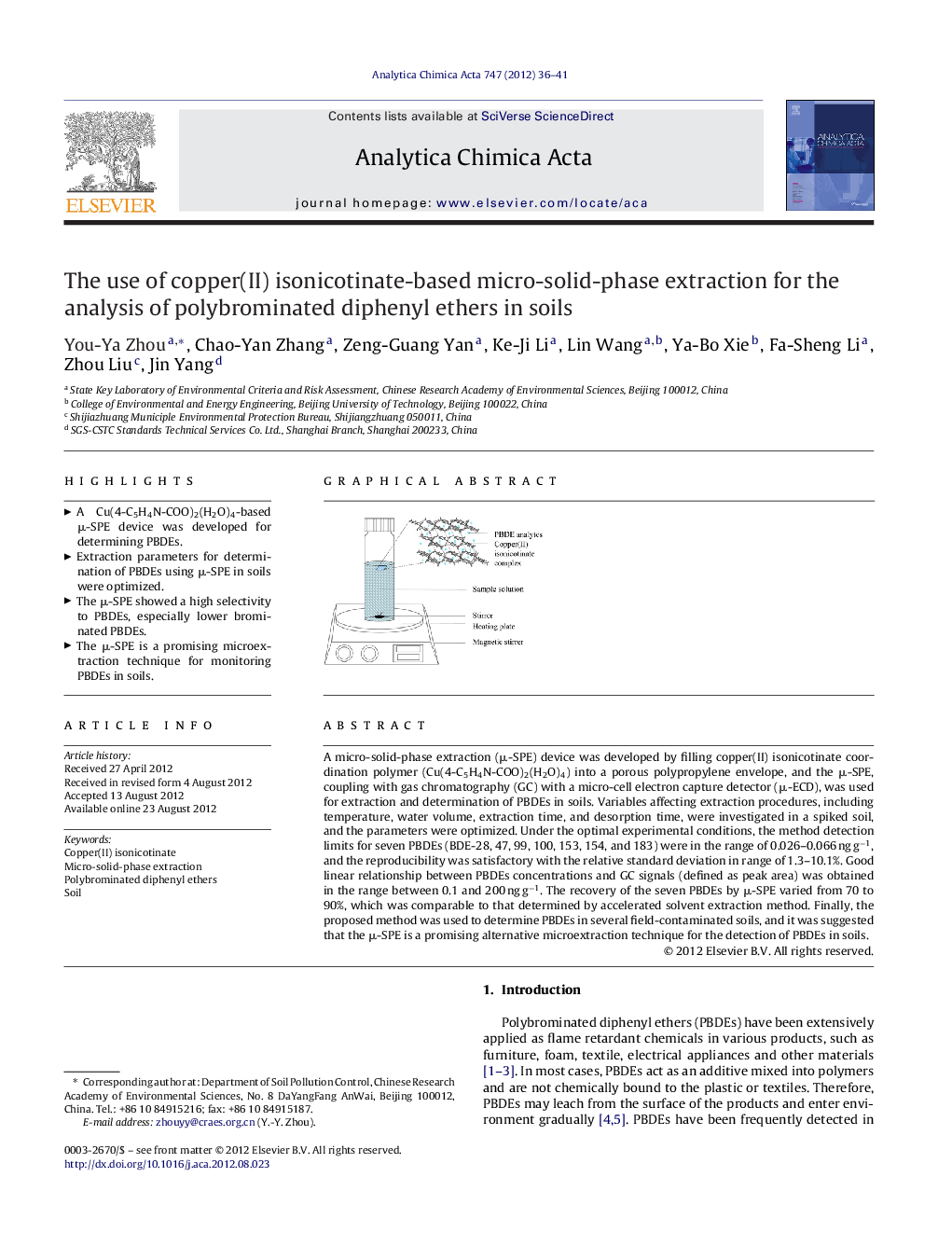| Article ID | Journal | Published Year | Pages | File Type |
|---|---|---|---|---|
| 1165840 | Analytica Chimica Acta | 2012 | 6 Pages |
A micro-solid-phase extraction (μ-SPE) device was developed by filling copper(II) isonicotinate coordination polymer (Cu(4-C5H4N-COO)2(H2O)4) into a porous polypropylene envelope, and the μ-SPE, coupling with gas chromatography (GC) with a micro-cell electron capture detector (μ-ECD), was used for extraction and determination of PBDEs in soils. Variables affecting extraction procedures, including temperature, water volume, extraction time, and desorption time, were investigated in a spiked soil, and the parameters were optimized. Under the optimal experimental conditions, the method detection limits for seven PBDEs (BDE-28, 47, 99, 100, 153, 154, and 183) were in the range of 0.026–0.066 ng g−1, and the reproducibility was satisfactory with the relative standard deviation in range of 1.3–10.1%. Good linear relationship between PBDEs concentrations and GC signals (defined as peak area) was obtained in the range between 0.1 and 200 ng g−1. The recovery of the seven PBDEs by μ-SPE varied from 70 to 90%, which was comparable to that determined by accelerated solvent extraction method. Finally, the proposed method was used to determine PBDEs in several field-contaminated soils, and it was suggested that the μ-SPE is a promising alternative microextraction technique for the detection of PBDEs in soils.
Graphical abstractFigure optionsDownload full-size imageDownload as PowerPoint slideHighlights► A Cu(4-C5H4N-COO)2(H2O)4-based μ-SPE device was developed for determining PBDEs. ► Extraction parameters for determination of PBDEs using μ-SPE in soils were optimized. ► The μ-SPE showed a high selectivity to PBDEs, especially lower brominated PBDEs. ► The μ-SPE is a promising microextraction technique for monitoring PBDEs in soils.
